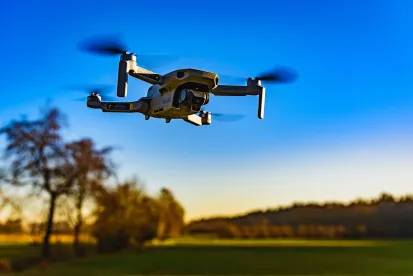Today, the National Transportation Safety Board (NTSB) investigates accidents involving manned aircraft and other major transportation accidents. However, there was a new Notice of Proposed Rule Making (NPRM) released by the NTSB which seeks to revise the agency’s authority to include investigations related to drone accidents. The NTSB is only authorized to investigate drone accidents if the drone weighs over 300 pounds. However, the NPRM would remove this weight limit and replace it with any drone that has “an airworthiness certificate” or meets other “airworthiness approval requirement[s].” Why? Well, the NPRM says, “The weight threshold is no longer an appropriate criterion because unmanned aircraft systems (UAS) under 300 lbs. are operating in high-risk environments, such as beyond line-of-sight and overpopulated areas. The proposed definition will allow the NTSB to be notified of and quickly respond to UAS events with safety significance.”
In response to the NPRM, the Association for Unmanned Vehicle Systems International (AUVSI) commented that as the Federal Aviation Administration and the drone industry work to define and develop type certifications, this definition under the NTSB’s investigation authority could be an overly broad definition. Instead, AUVSI suggested that the NTSB add the filter of “substantial damage” to the accidents that they investigate. A portion of AUVSI’s comment read:
“The category of UAS that hold an airworthiness certificate or approval is very broad and will continue to expand as the industry evolves. New technologies and construction materials, including light-weight and frangible materials, ensure that small UAS are purposefully built to lessen any impact and damage to the public, other aircraft, or to property.”
Instead, the AUVSI suggested that the NTSB maintain a maximum takeoff weight with a tie to the “substantial damage” clause. AUVSI also recommended refining the proposed language to coincide with the FAA’s Part 107 Rule (14 CFR 107) accident-reporting language. AUVSI said in its comment, “Specifically, we propose the condition to specify that these accident investigations are only undertaken if the cost of repairs exceeds $500 and/or the fair market value of property damage exceeds $500, as is the case in the Accident Reporting clause of §107.9 This will ensure that the NTSB’s authority is targeted in a cost effective manner that yields true benefits to aviation safety.”
Lastly, the AUVSI said in its comments that the NTSB should also clarify that an accident investigation is not required when the UAS “acts as intended as defined by the airworthiness certificate or approval, even if damage is incurred,” which again aligns with the FAA’s standards.
These comments coincide with the industry’s overarching push for risk-based rules consistent across all government agencies. It is certainly a work-in-progress.



 />i
/>i
